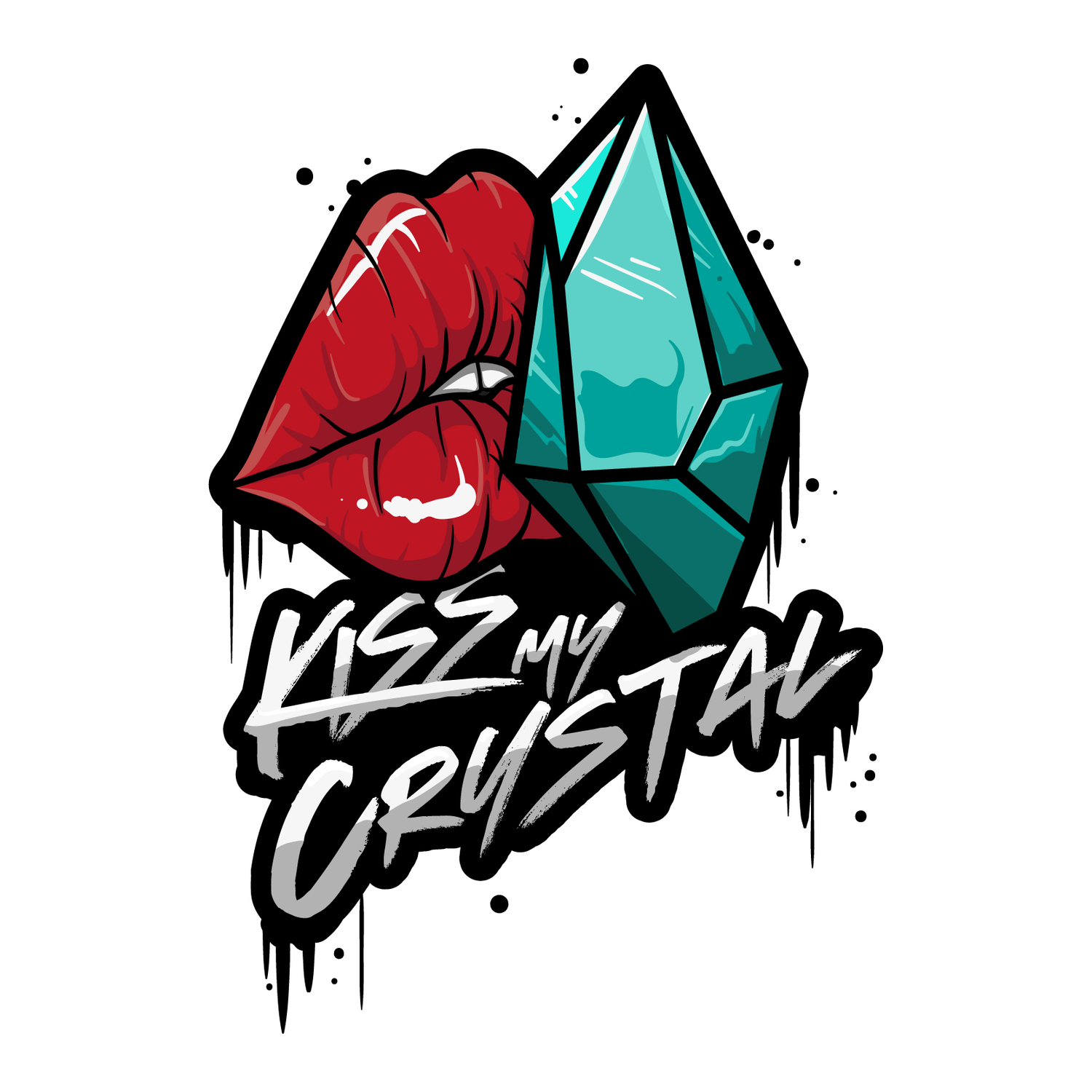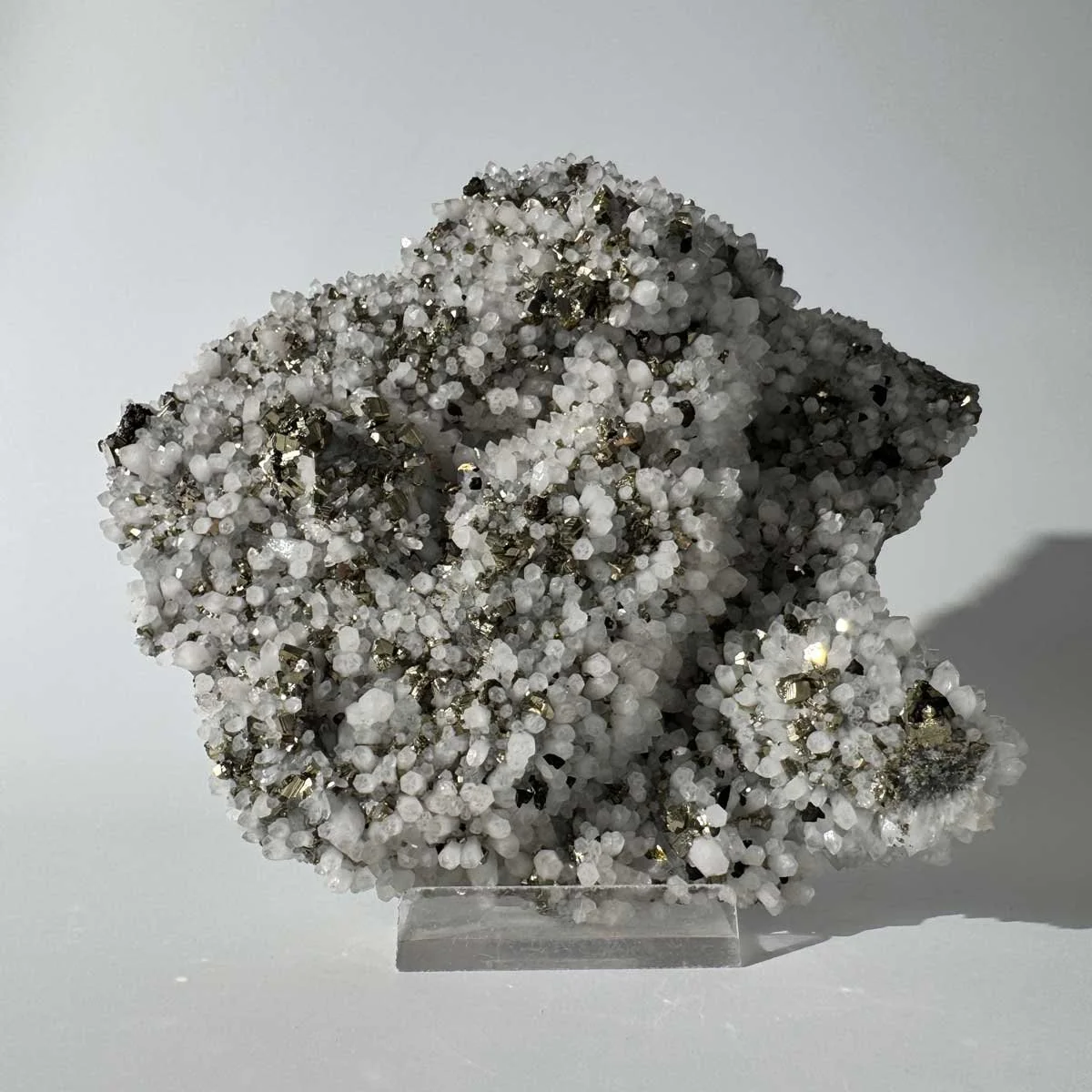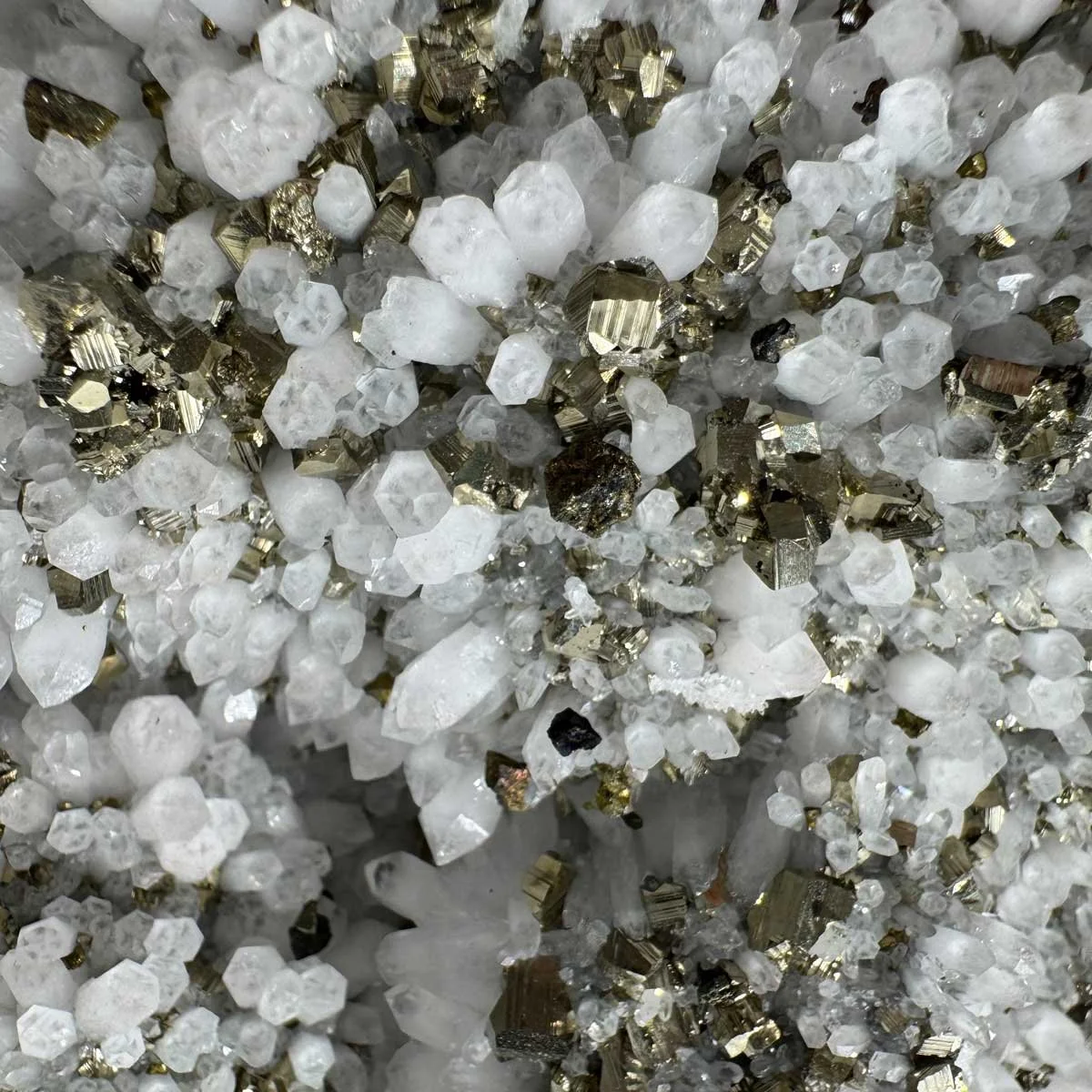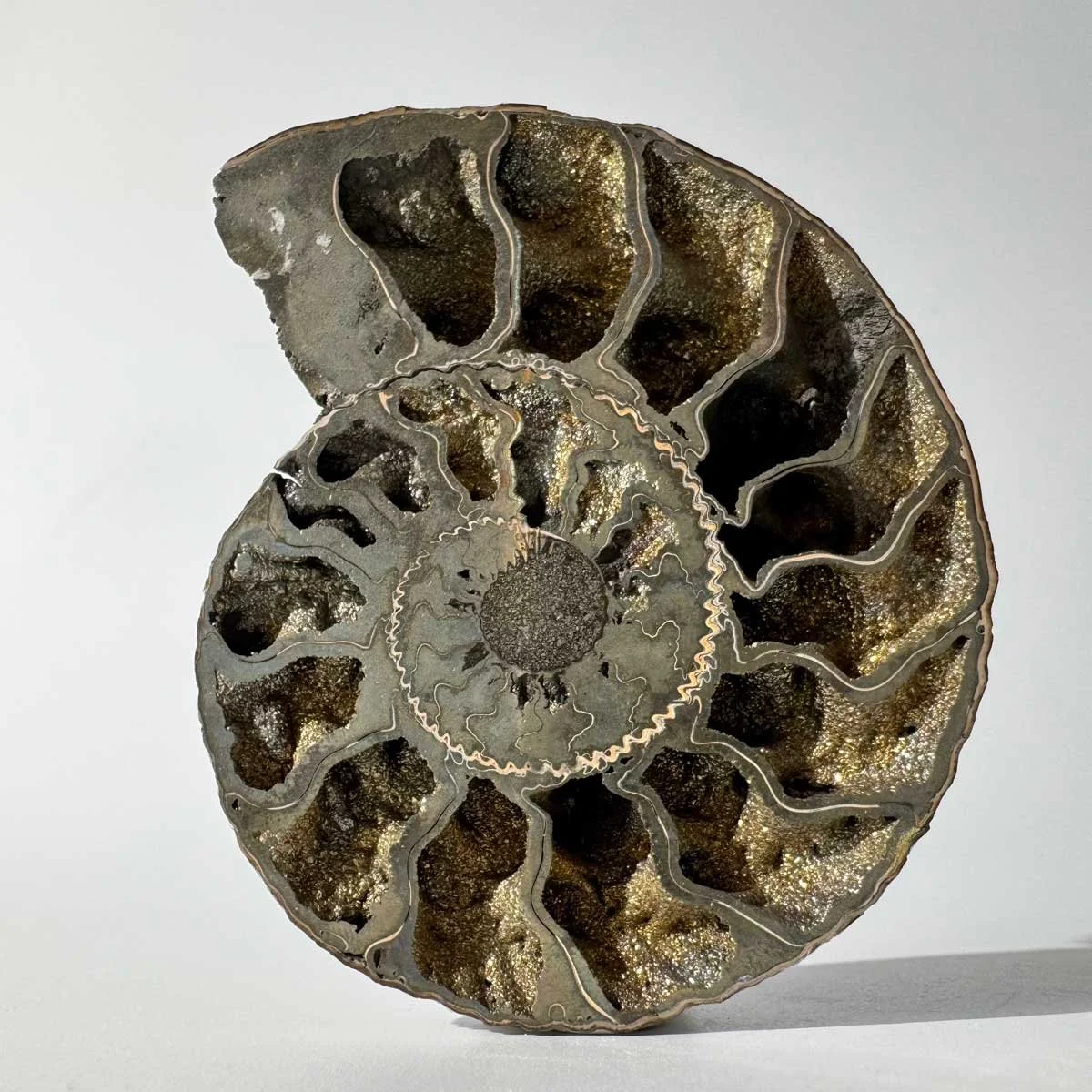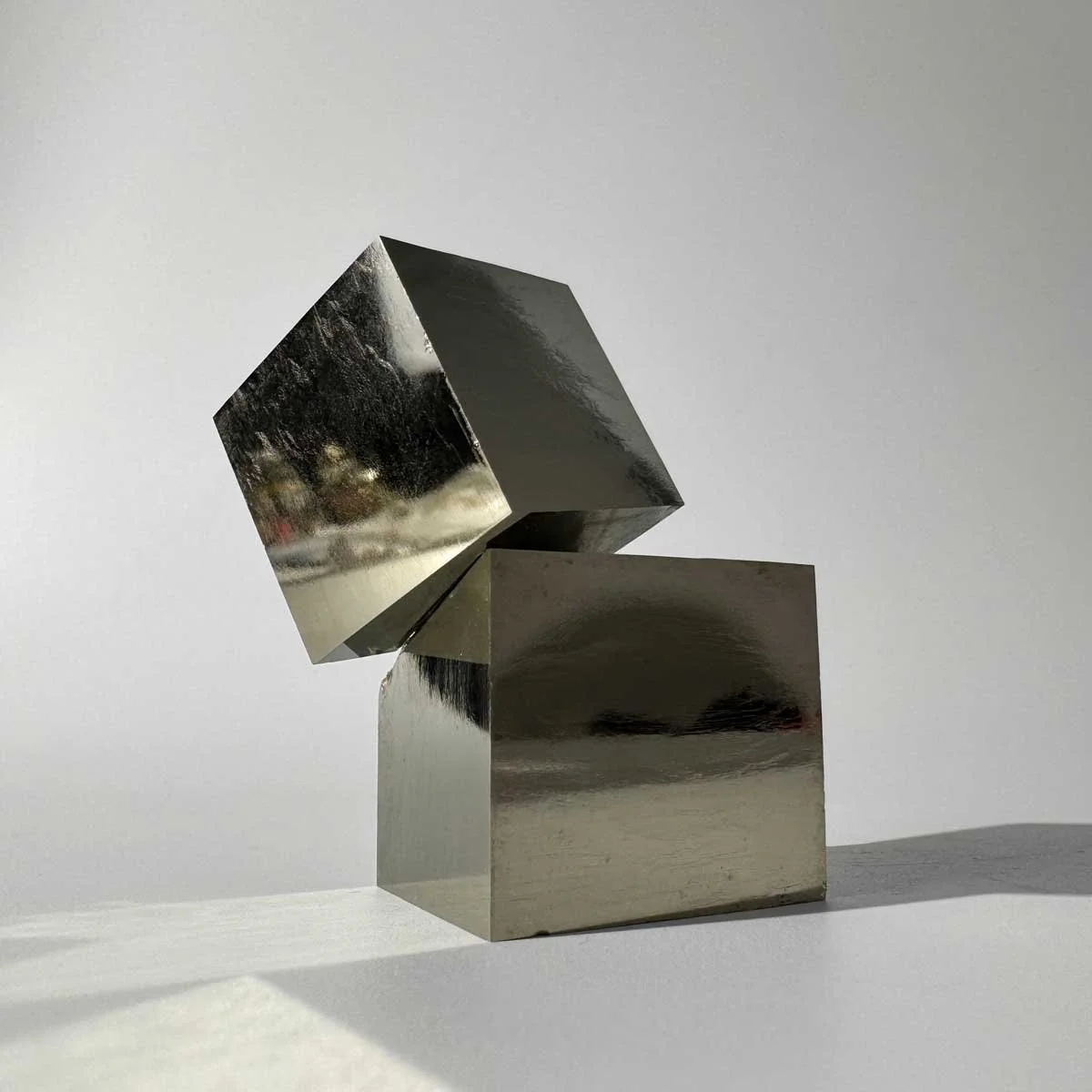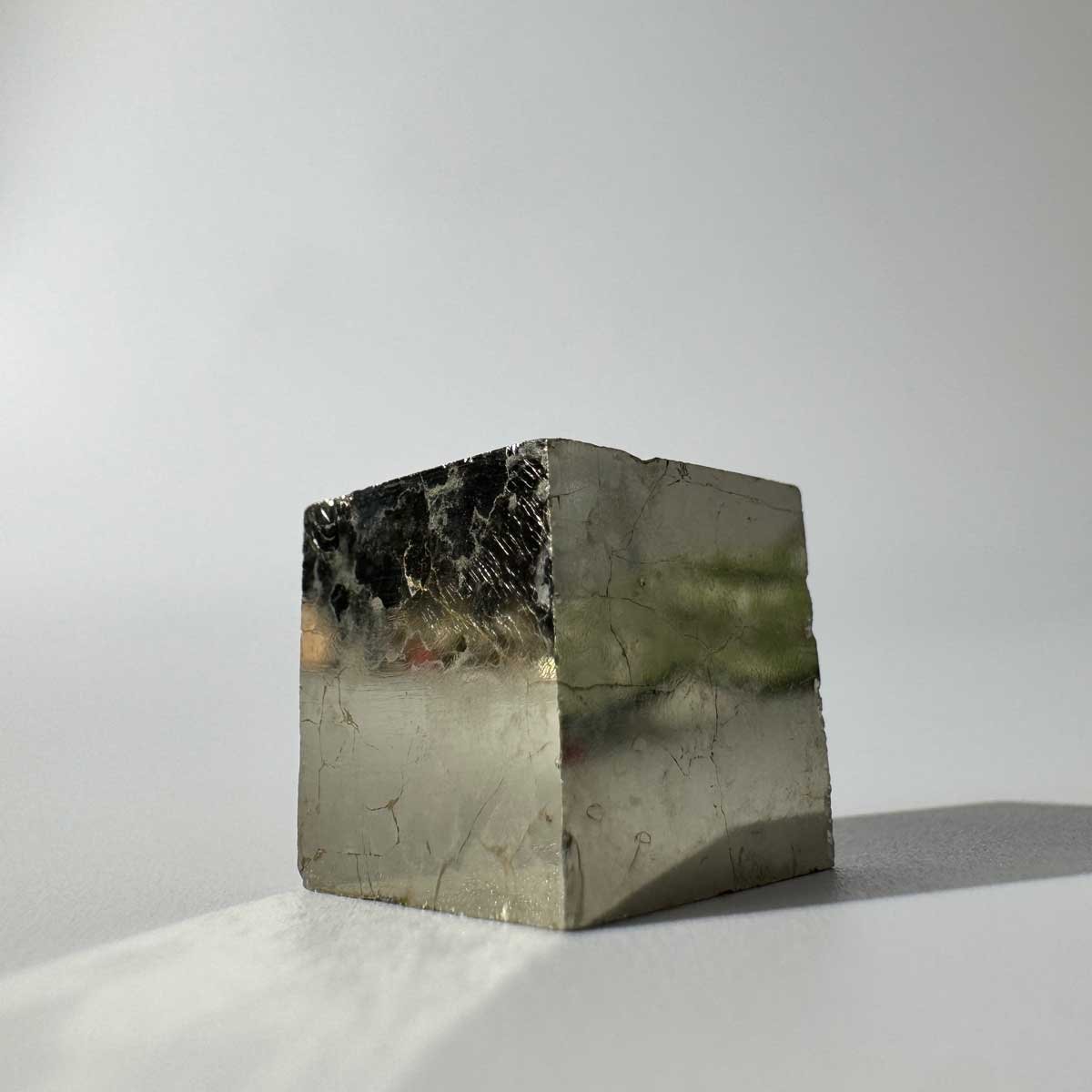PYRITE.
The Sunday Child
What if it all worked out? What would your choices be now if you knew that everything worked out in your favour? Pyrite asks us to trust that everything will be ok and then navigates us in the right direction. Pyrite is tied to the Sun and Mars, making it brim with confident, solar fire energy, bringing you a sense of fulfilment and good fortune ahead. It is an energetic and protective crystal, urging you forward. Traditionally, Pyrite is a symbol of wealth and abundance, so keep a piece of Pyrite in your workspace to promote success and let the Universe know you expect money to flow in.
Pyrite is also known as Iron Pyrite and Fool's Gold due to its brassy golden colour. Real gold is malleable, while Pyrite is harder and brittle. It is an abundant mineral and can be found pretty much worldwide. It is used in things from batteries and solar panels to the manufacture of sulfuric acid. Pyrite forms in some interesting habits such as cubic, octahedral, nodular, granular and massive.
Octahedral, and etched Pyrite formation from Peru.
Pyrite can form with Quartz and Calcite, creating the most beautiful clusters.
Natural cluster of Pyrite with Quartz, China.
Close-up view of a natural cluster of Pyrite with Quartz, China.
Pyrite can also form as a replacement mineral in fossils such as Ammonites.
Pyritised Ammonite, Russia
Pyrite vs Marcasite vs Chalcopyrite
Marcasite is also a variety of iron sulfide with the same chemical formula as Pyrite FeS₂. You may have heard of Marcasite as a stone used in jewellery; in reality, Pyrite is generally used and just called Marcasite. They use Pyrite instead as it is a slightly harder mineral. You may also hear the term Pyrite Suns to describe a radial form of this mineral that looks a bit like a Sand Dollar - these are actually Marcasite Suns, not Pyrite.
Marcasite Sun, Sparta, Illinois, USA.
Chalcopyrite is a term you may hear a lot in the crystal world. While some assume it's just a type of Pyrite, it actually contains copper, making it tarnish more easily. It can have a golden brass-like to greenish gold colour, or even a bit rainbow, and is softer than Pyrite. Chalcopyrite is a copper-iron sulfide with the chemical formula CuFeS₂, whereas Pyrite is FeS₂. You may see it as speckles on the surface of other crystals or as a replacement mineral in things such as fossils.
Even seasoned experts make mistakes when identifying Pyrite vs Chalcopyrite, so don’t beat yourself up if you make that mistake.
Chalcopyrite on Galena, Elba, Italy.
Chalcopyrite on druzy Quartz with inclusions of red Hematite, Jiangxi, China.
The Storage & Handling of Pyrite
Pyrite, similar to Marcasite and Chalcopyrite, does not like moisture or humidity. It will decay if left in a humid environment, a process known as Pyrite Rot. The best approximation I could find on this was that 60% humidity (according to Wikipedia) will start to cause problems. I would recommend keeping it in a cabinet or small glass vitrine along with a Silica gel pack. Personally, I have boxed dehumidifiers in the places I store my Pyrite, as well as Silica packs for the smaller pieces.
When you are working with Pyrite, always wash your hands after you have been handling it. You may notice that it leaves a smell behind, like when you have been handling coins. Best to wash that off. If you are cutting and polishing Pyrite, then always use a mask to avoid inhaling the dust.
Buyer’s Guide to Pyrite
Private Buyers
Pyrite is a must-have for any crystal enthusiast. If you want tap into its metaphysical properties, my top picks would be a tumble for on-the-go, natural cube (Spain) for grids and altars, or a polished sphere (Peru) for rituals and epic crystal displays.
If you are a specimen collector, then you have an array of choices. Some of the coolest specimens are natural Pyrite cubes that form within marl from Navajún, La Rioja, in Spain. They look amazing on the marl matrix or fully mined out. They often connect so you can get two or three connected together. Peru also produces some of the best octahedral and etched material. For something a little extra special, try Pyritized Ammonites.
Interior designers can’t go wrong with a natural cubic Pyrite cluster for a boujee paperweight or statement piece to draw abundance into a home office. For a cabinet of curiosities, Pyrite cubes in a marl matrix fit a natural palette; just keep Pyrite out of damp bathrooms, or it will start to erode.
Pair of joined Pyrite cubes from Ampliación a Victoria Mine, Navajún, La Rioja, Spain. From Stone Age Minerals.
Pyrite Ammonite, UK.
Retail Buyers
Most Pyrite will sell well. Its golden allure draws in a lot of buyers, from the novice to the experienced collector. Flats with natural cubic Pyrite from Spain are often good value, as are small clusters. The larger you get and the ‘cleaner’ the specimen, the more expensive it is. I would only stock Pyrite cubes in a marl matrix if you are selling to specimen collectors or are selling very large pieces for interiors.
There is a lot of cheap material from Peru, which can make for excellent value, larger cabinet size pieces; however, there is some controversy over mining this material in Peru, so use an authorised seller.
Pyrite Ammonites are more niche but would work well for social media sellers.
Single Pyrite cubes sold in flats, Spain.
Quick Guide | Pyrite
Zodiac: Pyrite is associated with the zodiac sign Leo.
Ruling Planet: The ruling planet for Pyrite is Mars.
Chakra: Pyrite is associated with the Solar Plexus (Manipura) Chakra.
Element: Pyrite is aligned with the element of Fire.
Crystal Charging: Pyrite can be charged under the light of a Full Moon or with a quick blast of afternoon sunshine to reconnect with the Sun’s energy.
Crystal Elixir: Pyrite is not water-safe. Pyrite is an iron sulfide and is not suitable for making crystal elixirs.
Crystal Care: Pyrite doesn’t really like water as it can tarnish its surface. If it is super dirty, then a quick wash with soapy water is okay, but just make sure you dry it thoroughly and quickly. If you have a polished piece or a cube, then you can use a soft jeweller's cloth to buff the surface. For clusters or uneven surfaces, you can use a soft makeup brush or compressed air duster to remove dust. Keep Pyrite in a dry environment, as humidity can cause Pyrite Rot. If you live in a damp environment, place a dehumidifier near your Pyrite.
The chemical formula for Pyrite: FeS₂
